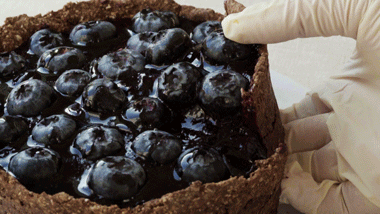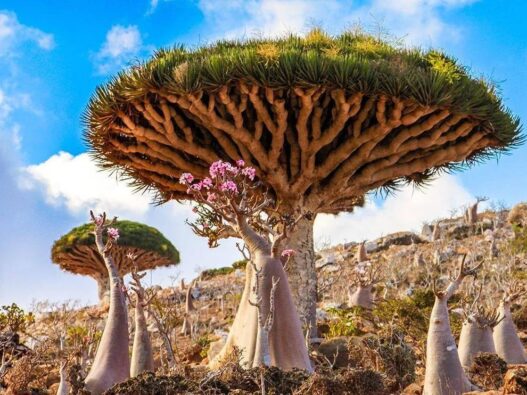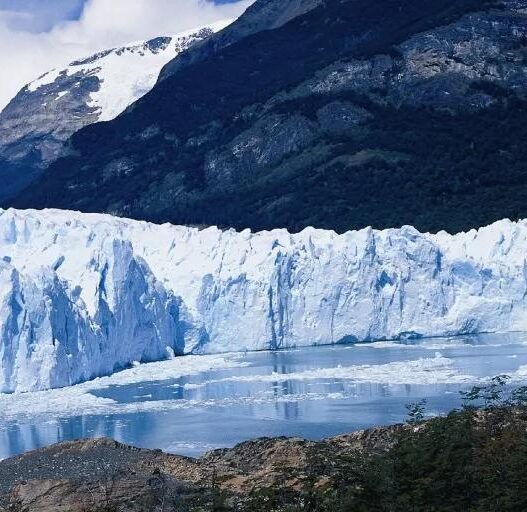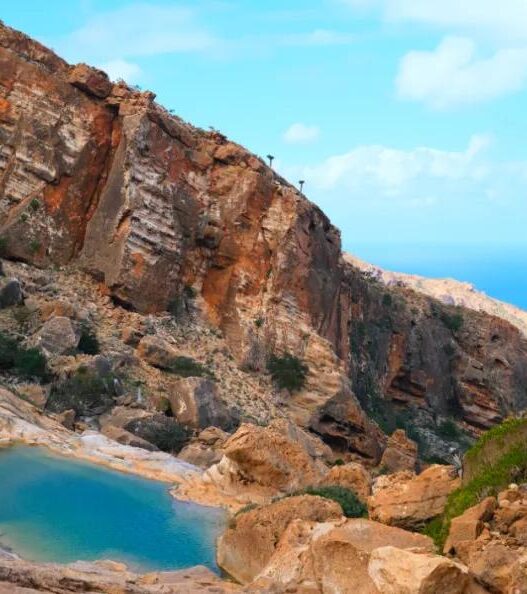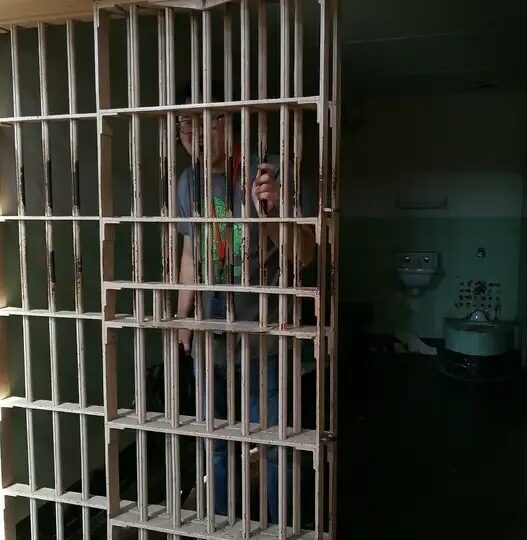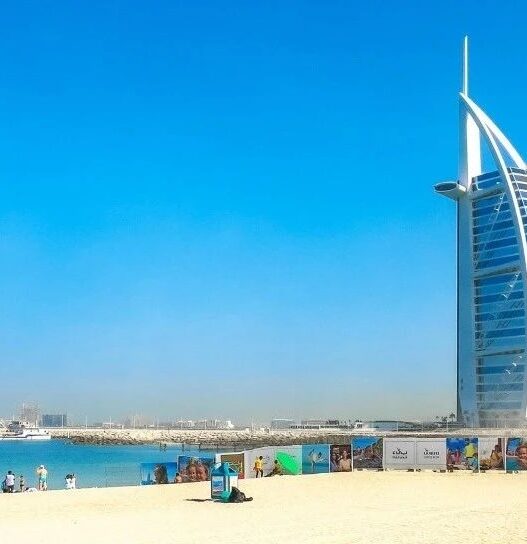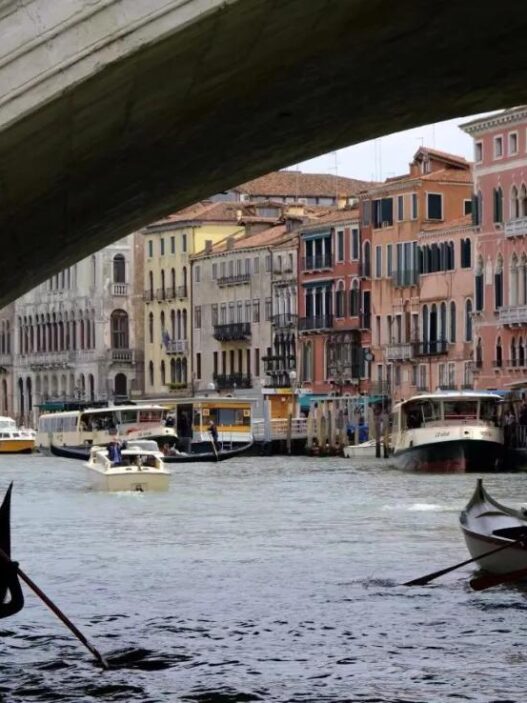Socotra Island, located in the heart of the Indian Ocean, is part of Yemen but is geographically far removed from the mainland. The island’s largest landmass, Socotra Island, is situated 340 kilometers from Yemen and only 240 kilometers from Somalia. Surrounded by vast waters, it truly feels like a hidden paradise on Earth.
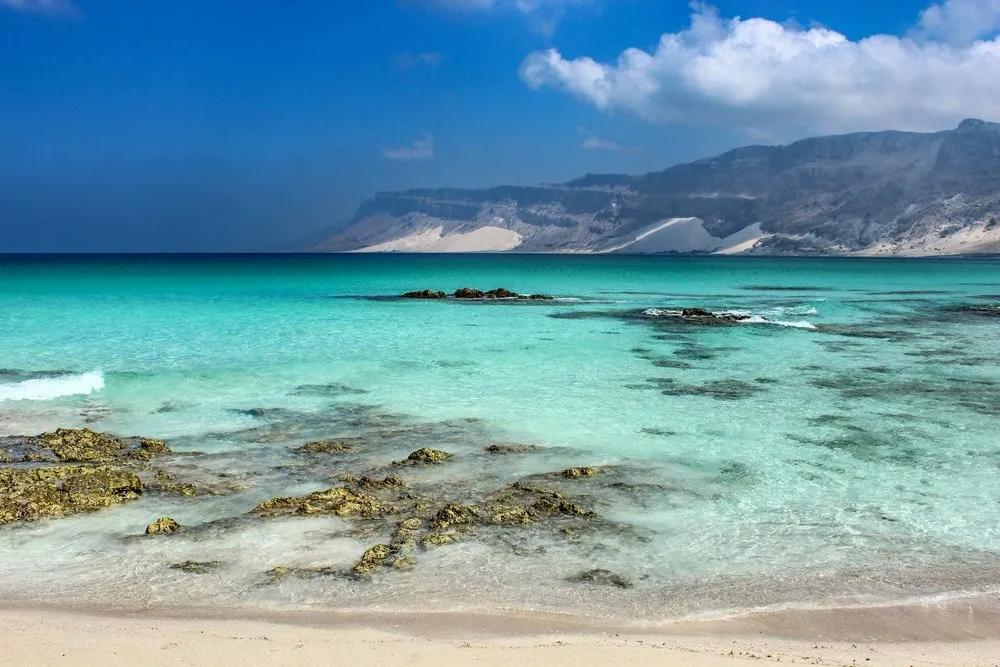
The island is made up of four smaller islands and is home to three distinct geographical features: the narrow coastal plains, the limestone plateau dotted with karst caves, and the rugged Hagher mountain range. The landscape here is dramatic, marked by steep hills and jagged peaks. Despite its beauty, Socotra’s climate is harsh—extremely hot and dry—creating a perfect environment for unique and rare plants.
A Botanical Paradise: The Dragon’s Blood Tree
Socotra is renowned for its one-of-a-kind flora. In fact, its plant species are listed among the ten most endangered island ecosystems in the world and have earned the island a spot on UNESCO’s World Heritage list.
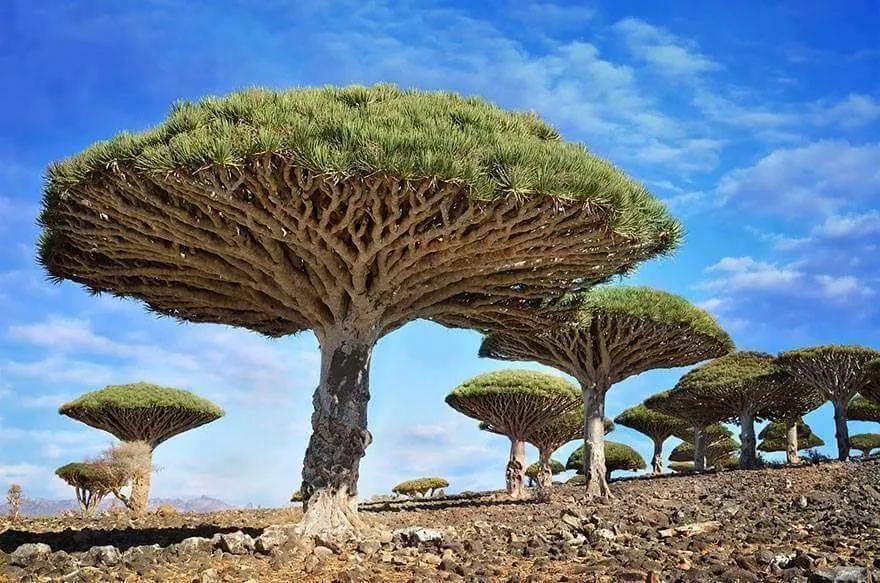
One of the island’s most iconic plants is the Dragon’s Blood Tree (Dracaena cinnabari), known for its umbrella-shaped canopy and deep red sap. This remarkable tree thrives in rocky areas at altitudes between 300 to 1,500 meters. Historically, the red resin of the tree was believed to have mystical and medicinal properties. It was used as an art pigment, dye, incense, and even in ancient rituals, making it a symbol of Socotra.
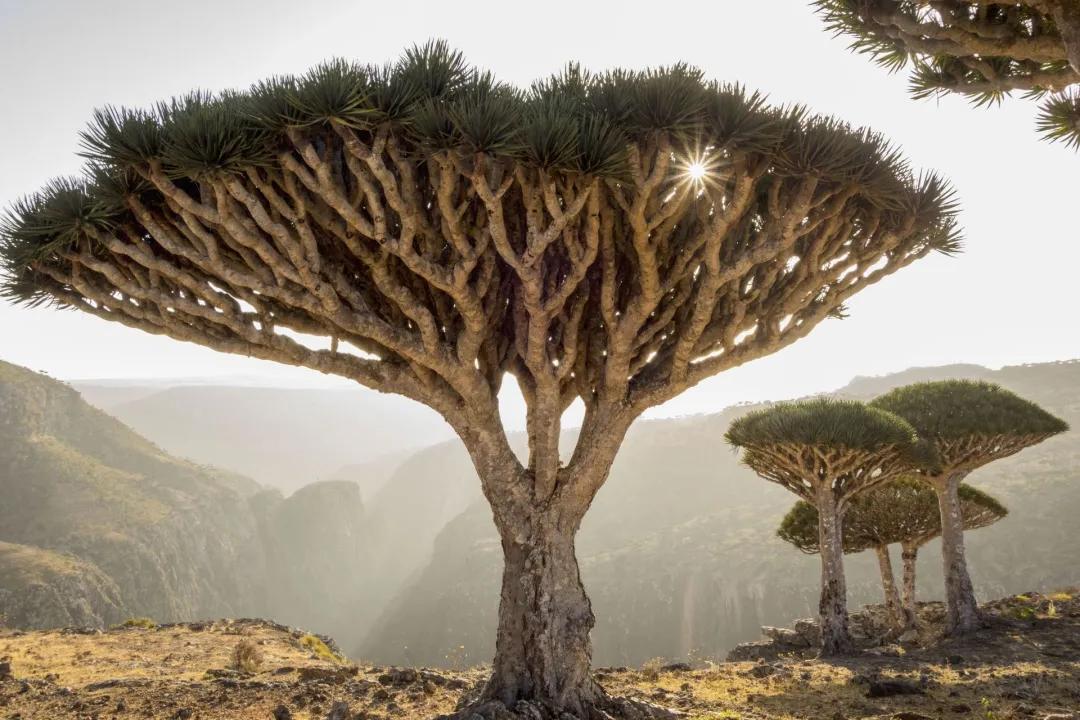
Though Socotra’s Dragon’s Blood Trees have endured for centuries, they stand as sentinels to the island’s untold history, surviving through the ages despite the harsh conditions.
Desert Rose: Nature’s Resilient Beauty
Another striking plant on Socotra is the Desert Rose (Adenium obesum). It has a thick, bulbous trunk, growing up to 3 meters tall. Its branches sprout sparsely at the top, bearing narrow, leathery leaves. The Desert Rose thrives in gravelly soil or rocky crevices. It withstands extreme dryness and high winds. This plant’s resilience is a testament to the island’s unique adaptability.
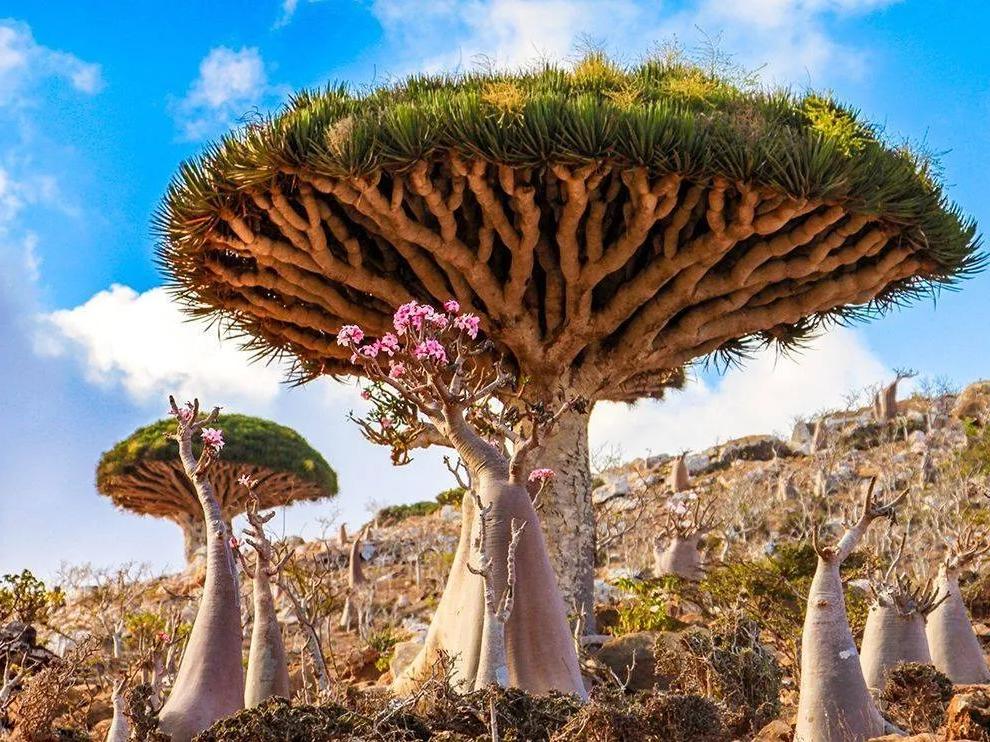
The wild Desert Rose comes in various forms depending on its geographic location, making it even more fascinating to botanists and nature lovers alike.
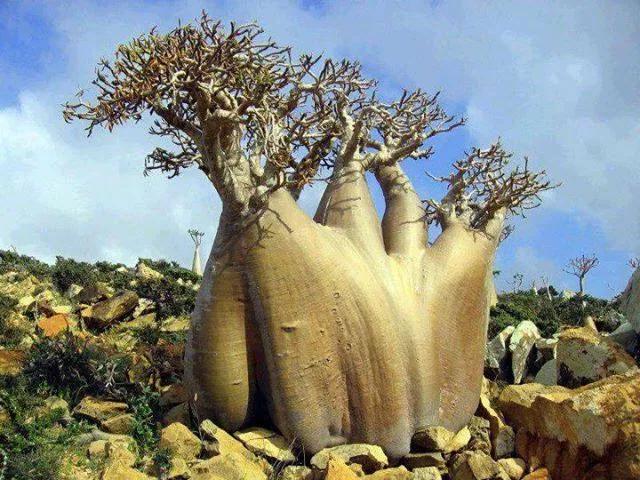
A Living Laboratory
Socotra Island is a living laboratory for scientists and botanists alike. Its isolation from the mainland has allowed species to evolve in unique ways, resulting in a biodiversity that’s found nowhere else on Earth. The island’s flora is an extraordinary example of nature’s resilience and adaptability in extreme conditions.
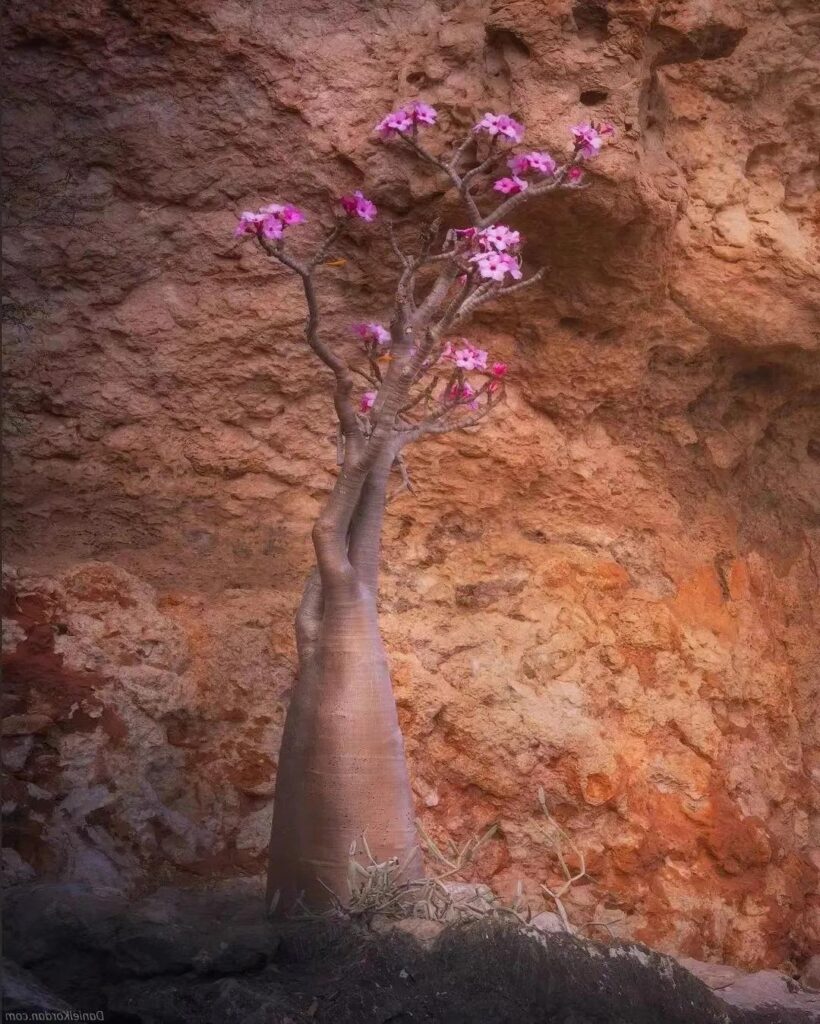
Visitors to Socotra can immerse themselves in this alien landscape, experiencing plants and scenery that seem to belong to another world.






